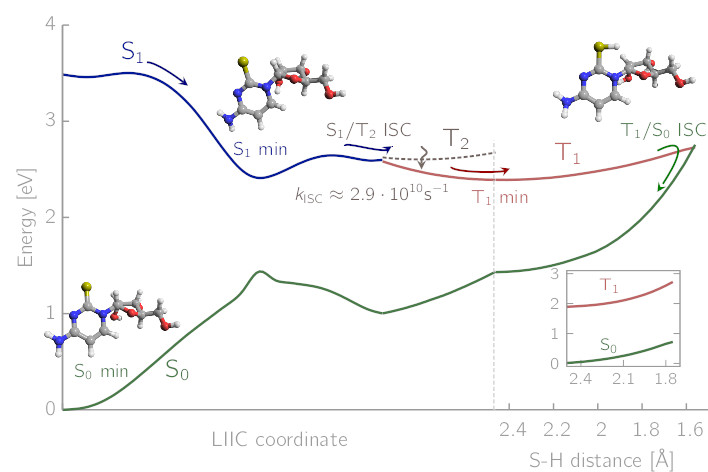Robert W. Góra
One of the key factors that influenced the abiogenesis and evolution of first living organisms, was the UV radiation. The first living organisms would be based on π-electronic macromolecules, susceptible to UV radiation induced damage that reached these molecules unattenuated by cell structures. These macromolecules probably would not have had the UV repair mechanisms present in contemporary living organisms. Thus, UV radiation was an important selective factor, and an efficient energy source, driving the early stages of abiogenesis. In our studies, we investigate photostability of molecules relevant to prebiotic chemistry and mechanisms of photochemically induced chemical reactions relevant to prebiotic chemistry.

To give a for instance, the results of our calculations provided rationale to explain the mechanism of a very efficient photoanomerization of α-2-thioribocytidine.
J. Xu et al., A prebiotically plausible synthesis of pyrimidine β-ribonucleosides and their phosphate derivatives involving photoanomerization, Nat. Chem., 2017, 9, 303–309.

More recently we provided plausible explanation of photoreduction mechanism of anhydro-thiopurines on a high-yielding, completely stereo-, regio- and furanosyl-selective prebiotic synthesis of the purine deoxyribonucleosides: deoxyadenosine and deoxyinosine.
J. Xu, V. Chmela, N. J. Green, D. A. Russell, M. J. Janicki, R. W. Góra, R. Szabla, A. D. Bond and J. D. Sutherland, Selective prebiotic formation of RNA pyrimidine and DNA purine nucleosides, Nature, 2020, 582, 60–66.
